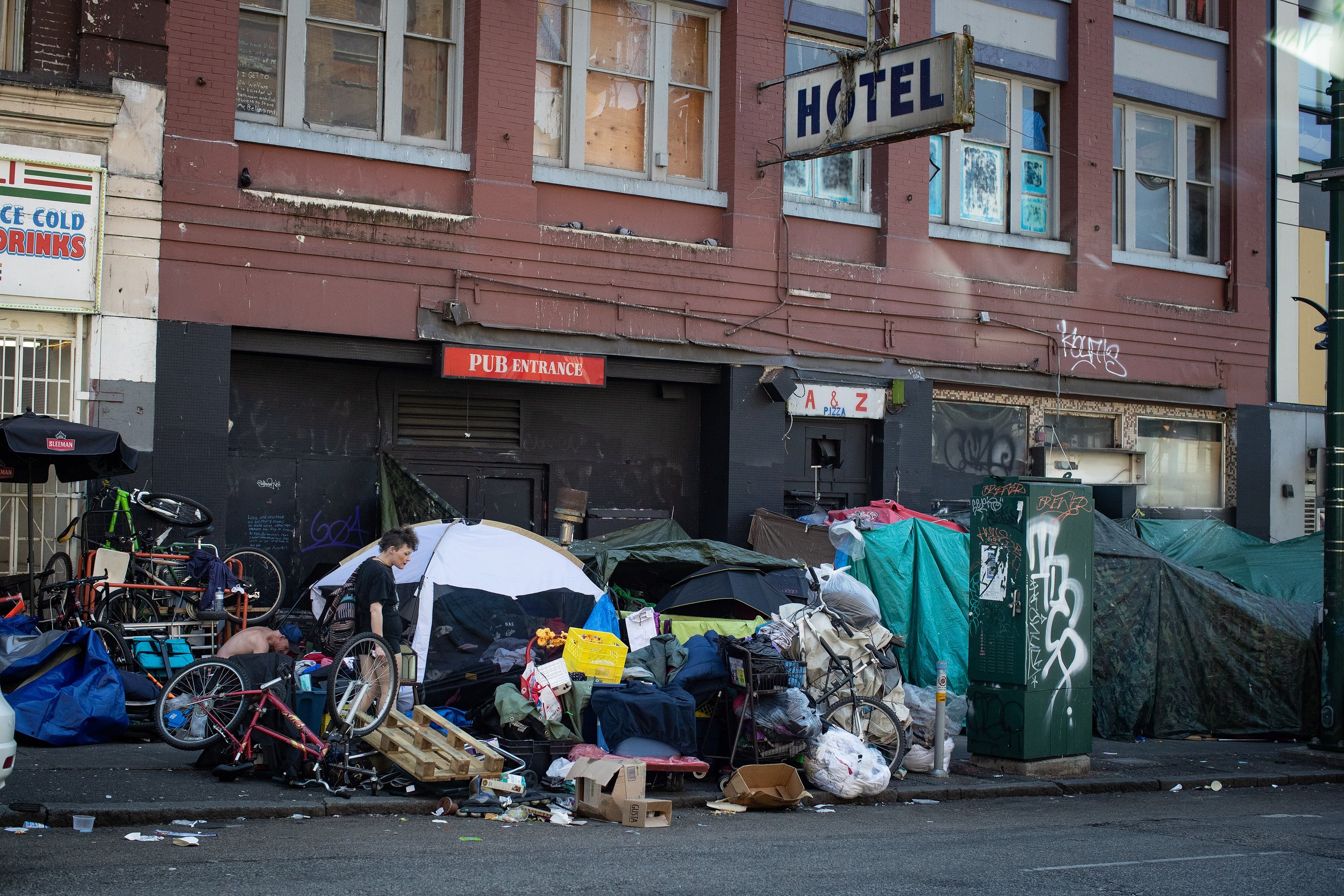Are Safe Injection Sites Mitigating or Exacerbating Vancouver’s Drug Problem?
The controversy surrounding safe injection sites has recently reignited in cities like Vancouver, particularly in areas such as Hastings Street, where the opioid crisis and rising homeless population has been on a devastating increase in recent years (McElroy, 2023). These facilities were designed to provide a controlled and supervised environment for drug use, aiming to both reduce the rates of overdose and promote public health. However, there has been increasing evidence showing that such services may have the opposite effect by enabling addiction (Rosen, 2020).
If you’ve recently visited Hastings Street in Downtown Vancouver, you’d likely agree that the once quiet and quaint street has become emblematic of the city's struggles with homelessness, addiction, and mental health. The rising population of homeless individuals in this area reveals an underlying plethora of systemic issues, including lack of affordable housing, mental health resources, and efforts to relieve the ongoing opioid crisis. Amidst all this, safe injection sites (SISs) have served as both a salvation for struggling populations and a life-sentence to drug-addiction for others.
East Hastings Street, Downtown Vancouver
Arguments in support of SIS often emphasize their public health benefits. These facilities aim to reduce fatal overdoses by providing medical supervision and access to clean syringes, which lowers the risk of blood-borne infections like HIV and hepatitis C (Bell, 2020). Additionally, they have the potential to connect users with social services, addiction treatment programs, and mental health support. Evidence from Insite, Vancouver’s first supervised injection facility, suggests that these sites can reduce deaths by overdose and emergency medical costs while improving overall community health (PHS, 2023).
On the opposing end, critics of SIS argue that while these sites may save lives in the short term, they could simultaneously perpetuate addiction. By normalizing drug use and providing a safe space for consumption, some argue that these facilities may deter users from seeking treatment or quitting altogether. There’s also concern about the impact on local communities. Residents and business owners near Hastings Street report increased drug-related activity, public disorder, stating that ‘the area has become a magnet for addicts’ (Baker, 2017).
All in all, the debate over SIS is only the beginning of a broader discussion in addressing addiction: balancing short-term and long-term solutions to drug-addiction and homelessness. Harm reduction strategies, like safe injection sites, prioritize saving lives in the immediate term. However, they must be coupled with supportive pathways to lasting recovery, including rehab programs, affordable housing, and comprehensive mental health care, to better address the root causes of addiction.
Thanks for tuning in!
By Angela Cai (she/her/hers) | Blog Committee Member
SOURCES:
Bell, Stephanie. “What Is the Effectiveness of Supervised Injection Services? | the Ontario HIV Treatment Network.” Www.ohtn.on.ca, May 2014, www.ohtn.on.ca/rapid-response-83-supervised-injection/.
CBC. “Vancouver-Area Homeless Numbers Show Sharpest Spike between Counts since Survey Began.” CBC, 5 Oct. 2023, www.cbc.ca/news/canada/british-columbia/greater-vancouver-homeless-count-2023-1.6987718.
“City on Drugs: The Dark Pull of Vancouver’s Downtown Eastside | CBC Radio.” CBC, Aug. 2017, www.cbc.ca/radio/ondrugs/city-on-drugs-the-dark-pull-of-vancouver-s-downtown-eastside-1.4229455.
PHS. “Insite at 20: Still Saving Lives, Still Giving Hope | PHS Community Services Society.” PHS, 14 Sept. 2023, www.phs.ca/insite-at-20-still-saving-lives-still-giving-hope/. Accessed 5 Feb. 2025.
Rosen, Jeffrey. “PHILADELPHIA INQUIRER OP-ED: SAFE INJECTION SITES ENABLE DRUG USERS and ENDANGER COMMUNITIES.” Www.justice.gov, 18 Feb. 2020, www.justice.gov/archives/opa/blog/philadelphia-inquirer-op-ed-safe-injection-sites-enable-drug-users-and-endanger-communities.


